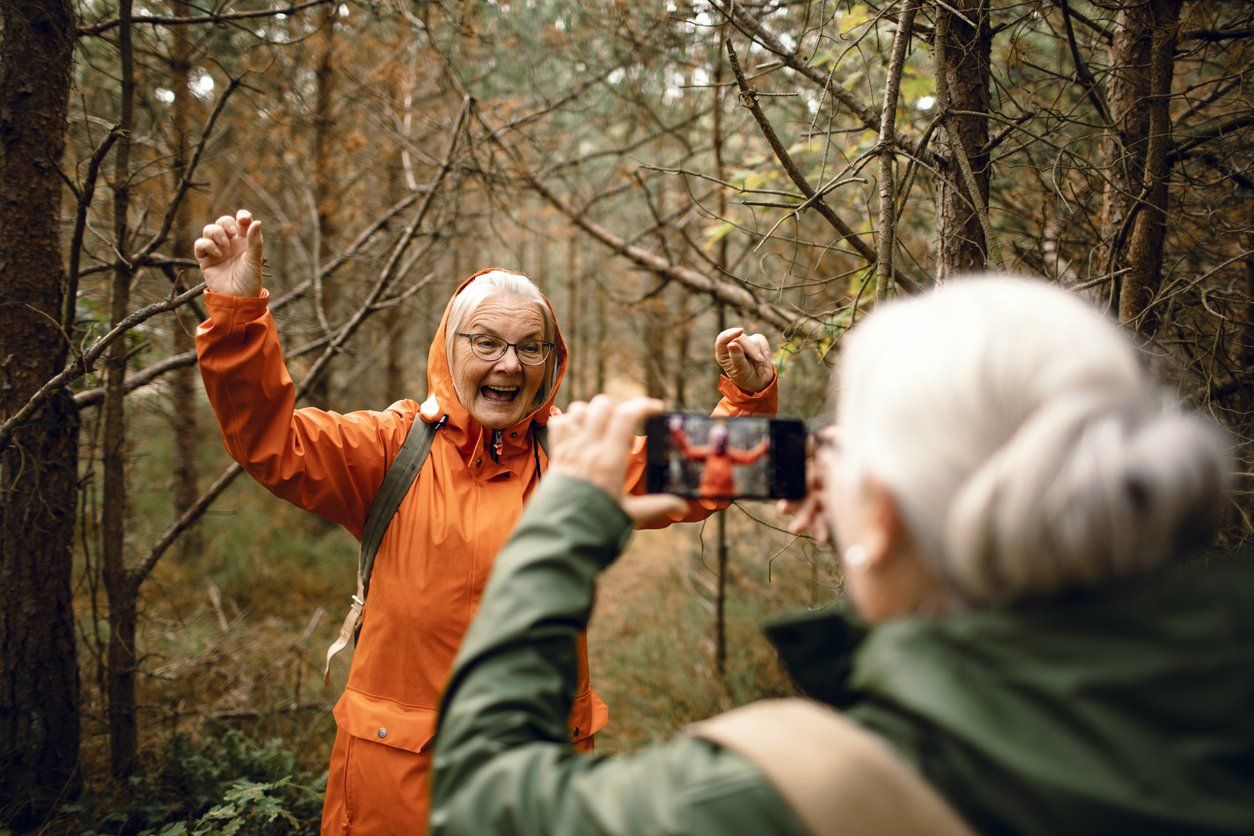Week 1
Walk for happiness
Your focus this week
We don’t need to walk for miles or hours at a time. Short, regular walks can increase our overall sense of well-being and happiness.
Weekly challenge
Today, plan to walk and leave all distractions behind! This means not looking at your phone. Use every step to think about you and your goals.
Plan support
Have a question about your plan. Reach out to the walking team at walking@heartfoundation.org.au
Welcome to Week 1 of your Personal Walking Plan
Your plan has three components:
- Walking
- Stretching
- Strength exercises (beginning in Week 5)
The aim of your plan is to gradually build your strength, stamina and overall fitness. Each week, we’ll adjust one or more aspects of your plan to ensure you keep progressing.
Here’s what you’ll be doing in Week 1:
| Week 1 | |
|---|---|
| Number of walks | 3 |
| Duration | 20 minutes per walk + stretching |
| Intensity | Light (3/10) |
As you’ll see, the aim is to complete 3 x 20-minute walks this week. It’s fine to start out slowly until you get a feel for the sort of pace you’re comfortable with. To begin with, you might like to walk every second day – say, every Monday, Wednesday and Friday. There’s no need to overdo it.
What to take with you
Before you start, make sure you have some comfortable walking shoes. Ideally, these should be enclosed shoes with good support. Depending on the time of day you choose to walk, you may also need a hat, sunscreen, sunglasses and a bottle of water.
Measuring your intensity
The intensity ratings included in your plan refer to the amount of effort you put in as you walk. The numbers on this scale indicate different levels of intensity, from low through to extreme.
Rate of Perceived Exertion (RPE) scale
During this first week, you should aim to hit about a 3 out of 10 on the intensity scale. That means walking at a pace that’s manageable for you – you should be able to have a conversation without huffing and puffing.
If this feels too much too soon, slow down and choose flat routes.
If this sounds too easy, just trust the process. Habits are formed through repetition. If you push too hard too early, chances are the habit will be easier to quit. Let’s remember the long goal here, this may be a six week program, but it's also the start to your new way of life.
Stretching exercises
As you’ll see in your plan, each walk includes a short stretching routine. Do them at the end of your walk when your muscles are warm – the goal is to help you become more flexible, as well as to reduce muscle stiffness the next day.
Managing any muscle stiffness
After your first walk or two, you might be surprised to find your muscles feeling a bit stiff or sore. This is normal, especially if you’re new to exercise or easing back in after a break. It should pass within a couple of days. If you’re concerned, have a chat to your doctor or another health practitioner.
Here are some tips to help you get the most out of your stretches:
- Move gradually into each stretch and don’t bounce.
- Hold each stretch for at least 30 seconds if you can.
- Avoid stretching to the point of discomfort (pain, tingling, numbness).
- Repeat each stretch 2-3 times until your muscles feel relaxed.
- Repeat each stretch on both sides of the body. Note that you may be tighter on one side than the other – this is normal.
Here’s a how-to video to help you get started:
Download and print off your weekly Program Card and Stretch Card to keep track of your progress.
Remember, if you experience any chest pain, have difficulty breathing or become unwell during any physical activity, stop and seek advice from your doctor or health care team.
Share your walk
Join our Facebook group and upload a selfie during your walk. Let us know what you're listening to, how the program's going and what you love most about walking.





